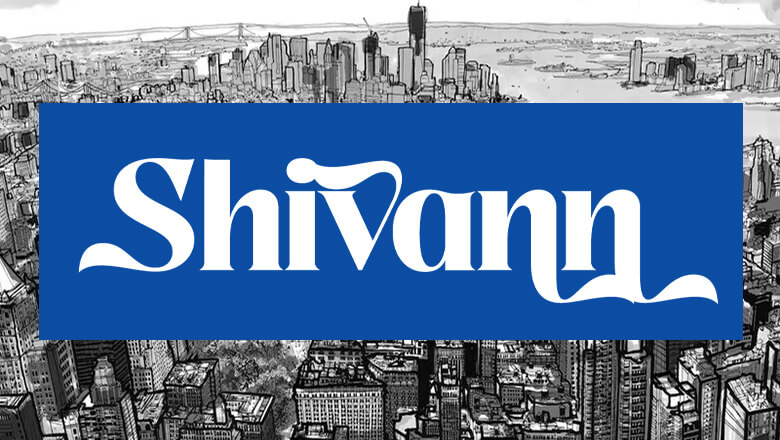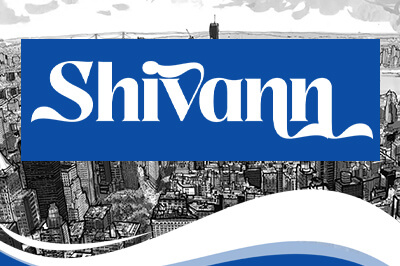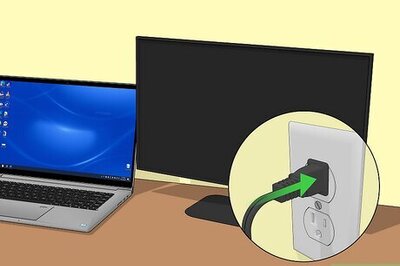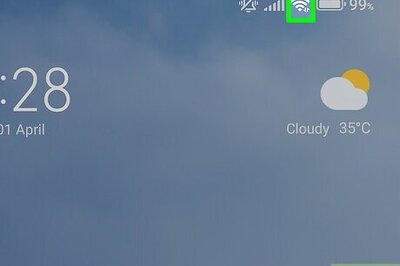
views
What does the Starbucks symbol mean?
The Starbucks symbol is a siren, representing the maritime history of coffee trading. According to Starbucks, the siren (or mermaid) in their logo is meant to pay homage to the history of coffee-trading on the high seas—a symbolism that’s paralleled by the name “Starbuck,” which is the name of a sailor in Herman Melville’s Moby Dick. The focus on maritime history ties in with Starbucks’ mission, which is to bring coffee beans, tea, and spices from around the world into your local coffee shop. The focus on maritime history also alludes to Starbucks’ founding in Seattle, a major port city. Sirens are also known for being enchanting and alluring throughout folklore and mythology, making the mermaid a solid metaphor for the allure of caffeine. Terry Heckler, the original logo designer, was also inspired by Norse woodcut designs. Specifically, he saw a two-tailed siren woodcut from the 16th century that he wanted to emulate for the Starbucks logo. Apart from the mermaid itself, other meaningful elements of the Starbucks symbols include the font, color, and shape of the logo: Font: When the Starbucks logo had text, it was written in a simple, bold, and eye-catching Sans-Serif font that clearly spells out the company’s name. Color: The current Starbucks colors are green and white. Traditionally, green represents wealth, healing, and nature. It’s also an alluring and claiming color. White is used for the siren symbol, likely to create contrast while also symbolizing purity, simplicity, and cleanliness. Shape: The Starbucks logo has always been circular. For graphic design reasons, the circle is very neat, simple, and recognizable. However, circles can also symbolize a never-ending ambition to achieve one’s goals.
History & Evolution of the Starbucks Logo
1971 The original Starbucks logo was brown and white (with no green at all!). It depicted a two-tailed siren in the center, which designer Terry Heckler based on a 16th-century Norse woodcut. The siren was topless with a fully visible torso and twin tails. It also had an illustrated, sketch-like design since it was based on a wooden carving. The siren sat in the center of a circular ring with the text “Starbucks Coffee, Tea, and Spices” encircling it. This original logo was actually considered controversial due to the siren’s exposed nipples. In later designs, the torso would be covered up with longer and more abstract hair.
1987 In 1987, Howard Schultz became the CEO of Starbucks and led the company’s first major rebrand. The primary Starbucks color was switched from brown to green, with black and white accents. These colors were meant to soothe customers’ eyes and symbolize newness, opportunity, and growth. Terry Heckler, the original logo designer, was also brought on to modernize the logo’s illustration. He changed the siren to a flowier, bolder, simpler, and more graphic design, and cut down the text to just “Starbucks Coffee.”
1992 The ‘90s were when Starbucks truly became the global coffee-brewing phenomenon that we know it as today. In 1992, Starbucks decided to amp up its logo with a new redesign. The siren was drawn to appear more up-close, with the bottom of the torso and top of the twin tails no longer showing. The colors, texture, and text of this new logo went otherwise unchanged. However, this logo posed some challenges because the design was easier to copy than past versions. Knock-off Starbucks products (that were difficult to distinguish from authentic ones) began to appear in stores worldwide.
2008 For Starbucks’ 40th anniversary, the brand tried to stir up some nostalgia with a retro rebrand. The company reimagined its original brown wood-cut symbol and presented it as a new logo. This decision may have also been inspired by the rampant hipster trend in the late 2000s. The customer response to this change was largely negative. Most people were familiar with and accustomed to the green branding, and they didn’t like the old/new brown version. This 2008 logo didn’t last long, with the company quickly reverting back to the 1992 version.
2011 Starbucks’ most recent redesign (as of 2025) happened in 2011. Starbucks decided to create a new, more modern, and more minimalistic logo design. They removed the outer circle around the mermaid, including the text and stars that sat inside that bordering circle. The black background color behind the mermaid was replaced with green, and the siren section of the logo became larger and even more graphic.
Hidden Detail in the Starbucks Logo
The mermaid design contains a hidden detail—an asymmetrical nose. At first glance, the graphic siren illustration on the Starbucks logo appears to be perfectly symmetrical. In fact, the 2011 logo redesigners wanted to smooth out this “imperfection,” but they felt that the siren appeared too cold, perfect, and inhuman. So, they added this asymmetry back in by elongating the shadow on one side of the siren’s nose. If you look just below the right eye of the Starbucks siren symbol, you’ll see that the shadow below it (that defines the bridge of the nose) is slightly longer than the shadow on the opposite side.
Fun Facts About Starbucks
Starbucks was named after a character from Herman Melville’s Moby Dick. Originally, the founders of Starbucks considered names like “Starbo,” the name of a mining town, and “Pequod,” the name of the whaling ship in the novel Moby Dick. However, the founding team then stumbled upon the name “Starbuck,” a sailor character in Moby Dick. Since the coffee house planned to sell beans, tea, and spices from around the world, this name was deemed perfect due to its connection to seafaring and early coffee trading.
Starbucks was founded by three college students in Seattle. Three college students founded Starbucks on March 30th, 1971. Their names were Gordon Bowker, Zev Siegl, and Jerry Baldwin. They established the first Starbucks store in Seattle’s Pike Place Market, a historic and iconic section of the port city.
Starbucks has round tables to make customers feel less alone. Have you ever noticed that (nearly) all of the tables at any Starbucks location are round? This design choice was intentional, as the company’s founders believed that round tables feel more welcoming and make solo customers feel less alone.
You can tell the rank of a Starbucks employee by their apron color. Most Starbucks employees wear green aprons, but you might see a black one from time to time. Black aprons are exclusively worn by Starbucks coffee masters, who earn their aprons by mastering everything related to Starbucks coffee.
There are over 87,000 possible drink combinations at Starbucks. Starbucks was partially so successful—and remains extremely popular to this day—due to the customizable drinks on its menu. By combining flavors, syrups, toppings, milk alternatives, and more, there are over 87,000 possible drink combinations on the Starbucks menu. There’s also a secret menu with fun refreshers, Frappuccinos, and other drinks that can’t be found on the official menu.
There’s a Starbucks inside the CIA’s Virginia headquarters. Everyone likes Starbucks—even the CIA! At the CIA headquarters in Langley, Virginia, you can find a private Starbucks store for CIA agents and employees. It’s known as “Store Number 1” or “Stealthy Starbucks,” and the baristas there have to follow unique rules, like not asking for names due to security concerns for undercover agents. Baristas must also undergo background checks and be personally escorted in and out of the facility.
There’s a Starbucks store in D.C. that operates in American Sign Language. Starbucks has another unique store in Washington, D.C. All of the employees at this store are fluent in American Sign Language (ASL), and the store is completely designed to accommodate Deaf and Hard of Hearing individuals and enhance communication. Why this store, you ask? This “Signing Store” is near Gallaudet University, the most prominent college for Deaf and Hard of Hearing students in the U.S.
More Logos with Hidden Meanings
Starbucks' logo isn't the only one with a cool history or secret meaning. Many companies have fascinating backstories or hidden meanings behind their logo designs. Here are a few of the biggest companies with the most intriguing logos: Apple: The Apple logo references the Tree of Knowledge in the story of Adam and Eve. Baskin-Robbins: The ice cream brand with 31 flavors has a hidden “3” “1” in the logo. Beats: The audio company’s logo is meant to resemble a person wearing headphones. FedEx: The delivery company has a hidden arrow between the “E” and “X.” Nike: Nike’s iconic “swoosh” represents the wings of the same-named victory goddess.




















Comments
0 comment